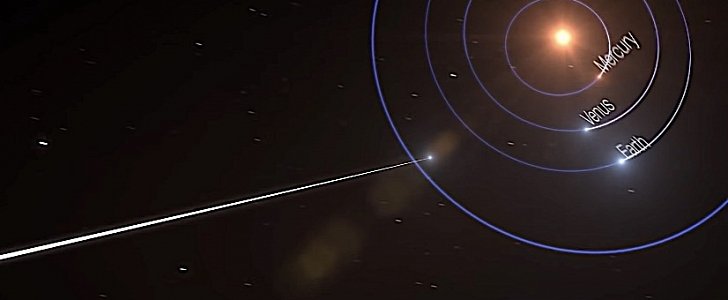If it looks like a spaceship, if it accelerates and changes course while passing through our solar system like a spaceship, then it most definitely must be an active comet.
Nearly one year ago, the Haleakala Observatory in Hawaii detected a strangely shaped object taking a stroll through our solar system. They named it Oumuamua, meaning scout or messenger in Hawaiian.
As soon as it was discovered, the object made all wonder whether this is a ship of an alien civilization. It certainly was not from this solar system - it is the first object coming from another star system to transit our space and be detected by humans - and was behaving strangely enough.
At the time of its discovery, astronomers said the object comes from the direction of the star Vega in the constellation Lyra, but that’s like saying Mercedes manufactures cars somewhere on Earth. No one really knew at the time where exactly Oumuamua came from.
On Tuesday, a group of astronomers and researchers from several institutions announced through a paper accepted to The Astronomical Journal they might have found the possible home stars of the object.
Using mathematics few actually understand – something that has to do with determined non-Keplerian trajectory combined with the reconstructed galactic orbits of 7 million stars from the Gaia DR2 stellar catalog – the team narrowed the list of possible home stars to four.
The first candidate is the M2.5 dwarf named HIP 3757, in the constellation of Cetus. The second a G5 dwarf by the name of HD 292249, of unspecified location, while the third and fourth are stars that bear no name yet, also in unspecified constellations.
Despite narrowing down the search, the team does admit that it is “unlikely that our current search would find Oumuamua's home star system.”
So, at least for the foreseeable future, Oumuamua will remain just a 230 by 35 meters mystery, that from time to time accelerates and changes course.
For those with a taste of complex mathematics and astronomy, the document attached below contains the research that led to the announcement made by the team.
As soon as it was discovered, the object made all wonder whether this is a ship of an alien civilization. It certainly was not from this solar system - it is the first object coming from another star system to transit our space and be detected by humans - and was behaving strangely enough.
At the time of its discovery, astronomers said the object comes from the direction of the star Vega in the constellation Lyra, but that’s like saying Mercedes manufactures cars somewhere on Earth. No one really knew at the time where exactly Oumuamua came from.
On Tuesday, a group of astronomers and researchers from several institutions announced through a paper accepted to The Astronomical Journal they might have found the possible home stars of the object.
Using mathematics few actually understand – something that has to do with determined non-Keplerian trajectory combined with the reconstructed galactic orbits of 7 million stars from the Gaia DR2 stellar catalog – the team narrowed the list of possible home stars to four.
The first candidate is the M2.5 dwarf named HIP 3757, in the constellation of Cetus. The second a G5 dwarf by the name of HD 292249, of unspecified location, while the third and fourth are stars that bear no name yet, also in unspecified constellations.
Despite narrowing down the search, the team does admit that it is “unlikely that our current search would find Oumuamua's home star system.”
So, at least for the foreseeable future, Oumuamua will remain just a 230 by 35 meters mystery, that from time to time accelerates and changes course.
For those with a taste of complex mathematics and astronomy, the document attached below contains the research that led to the announcement made by the team.

